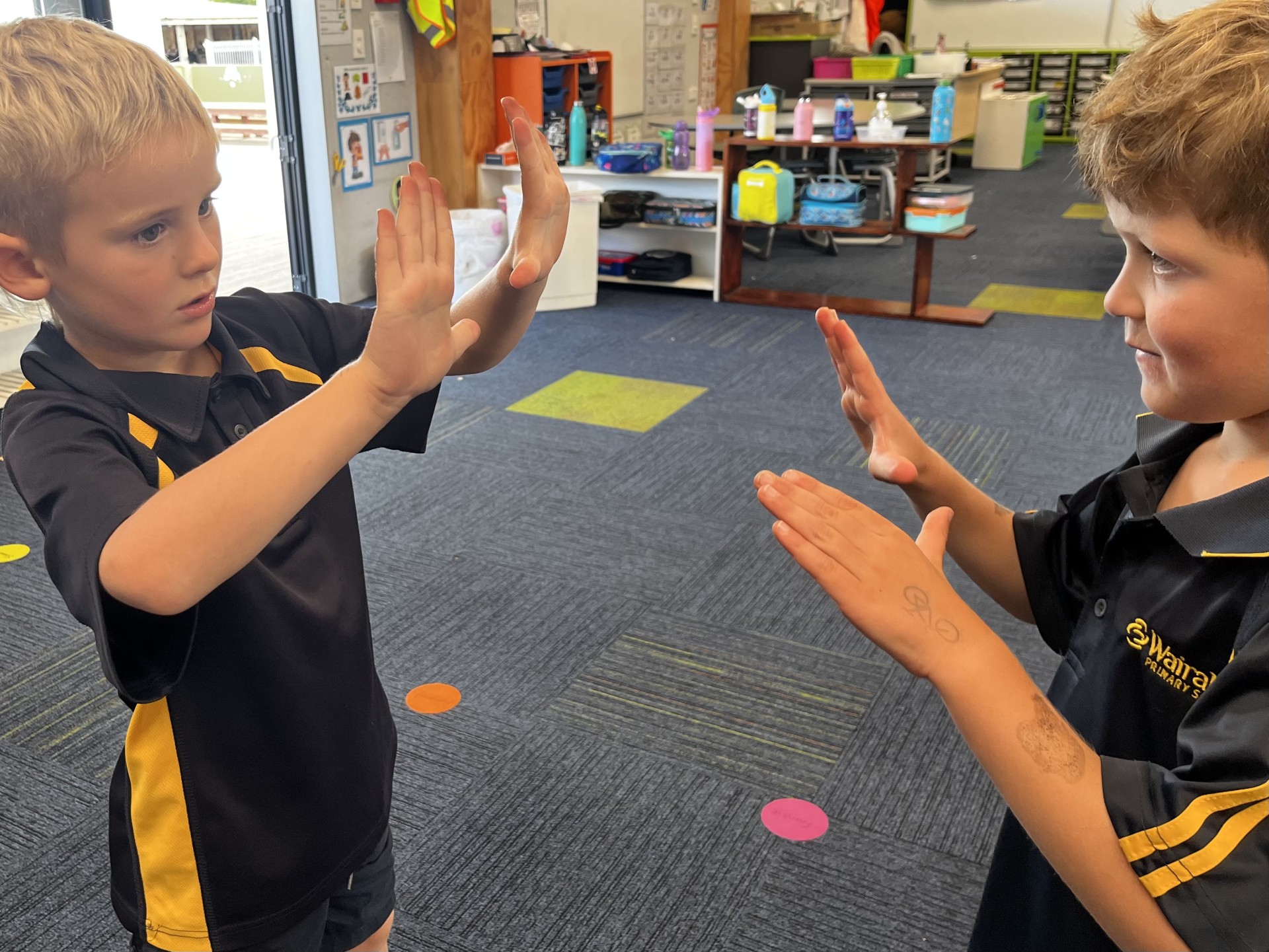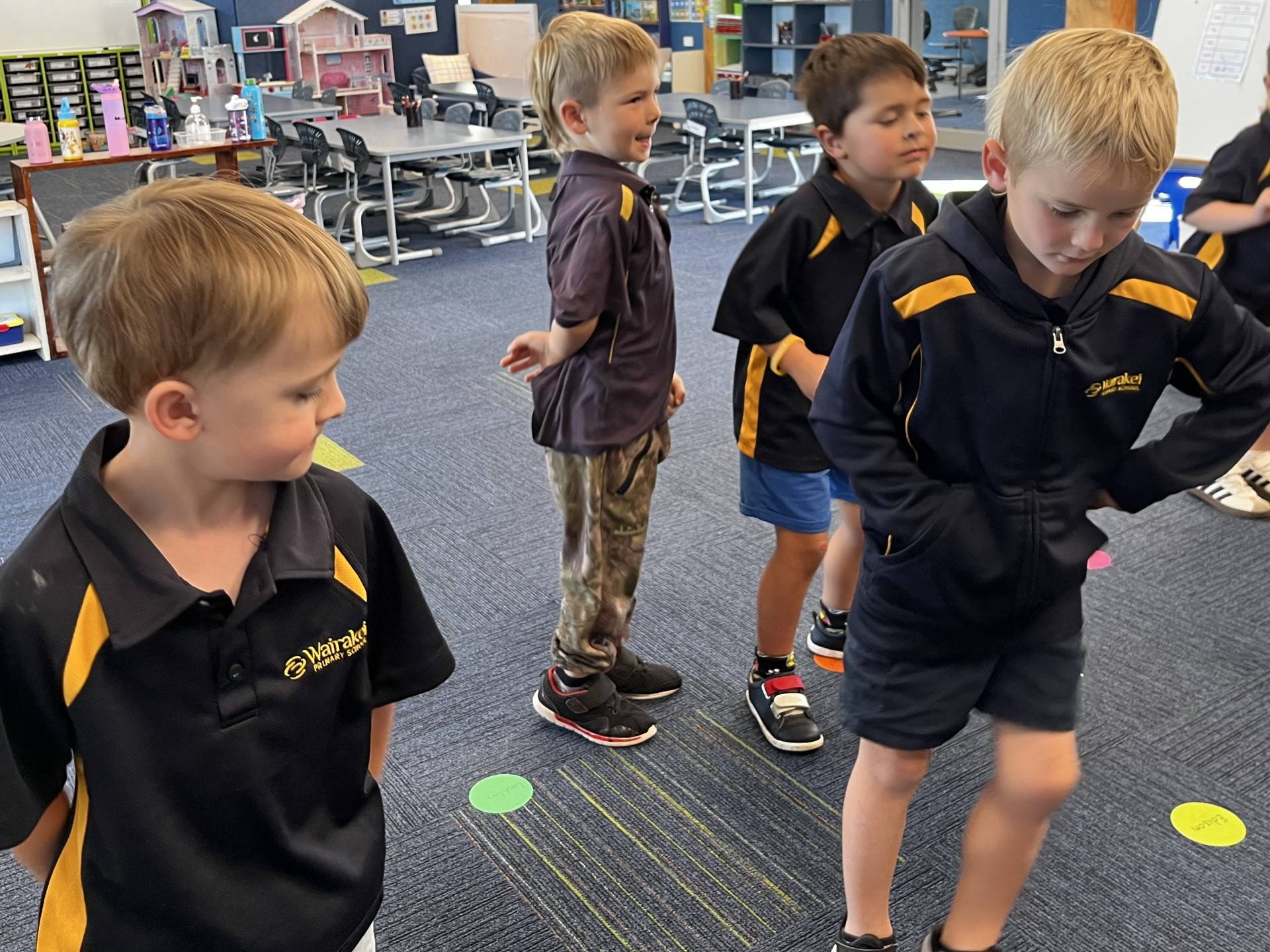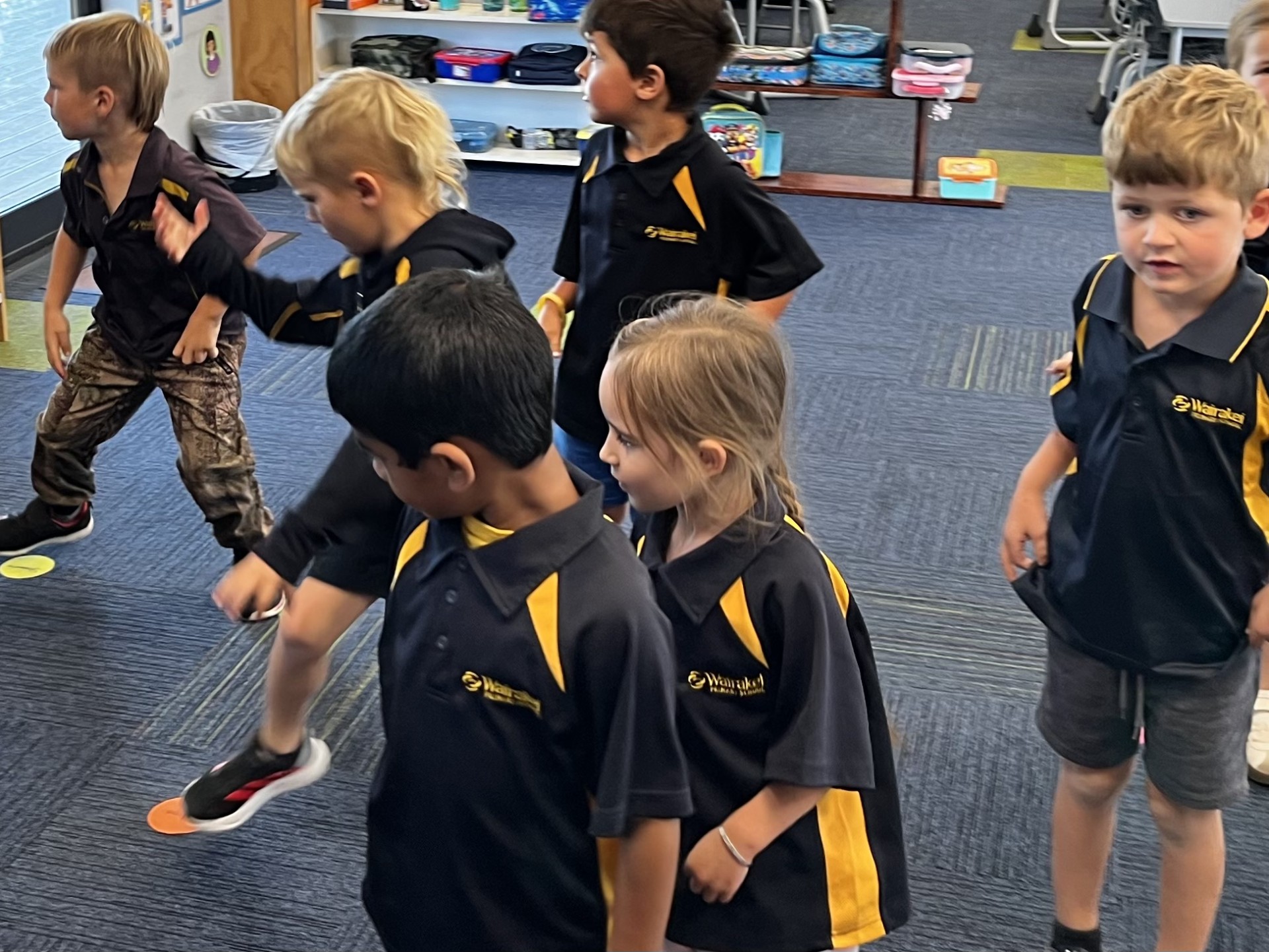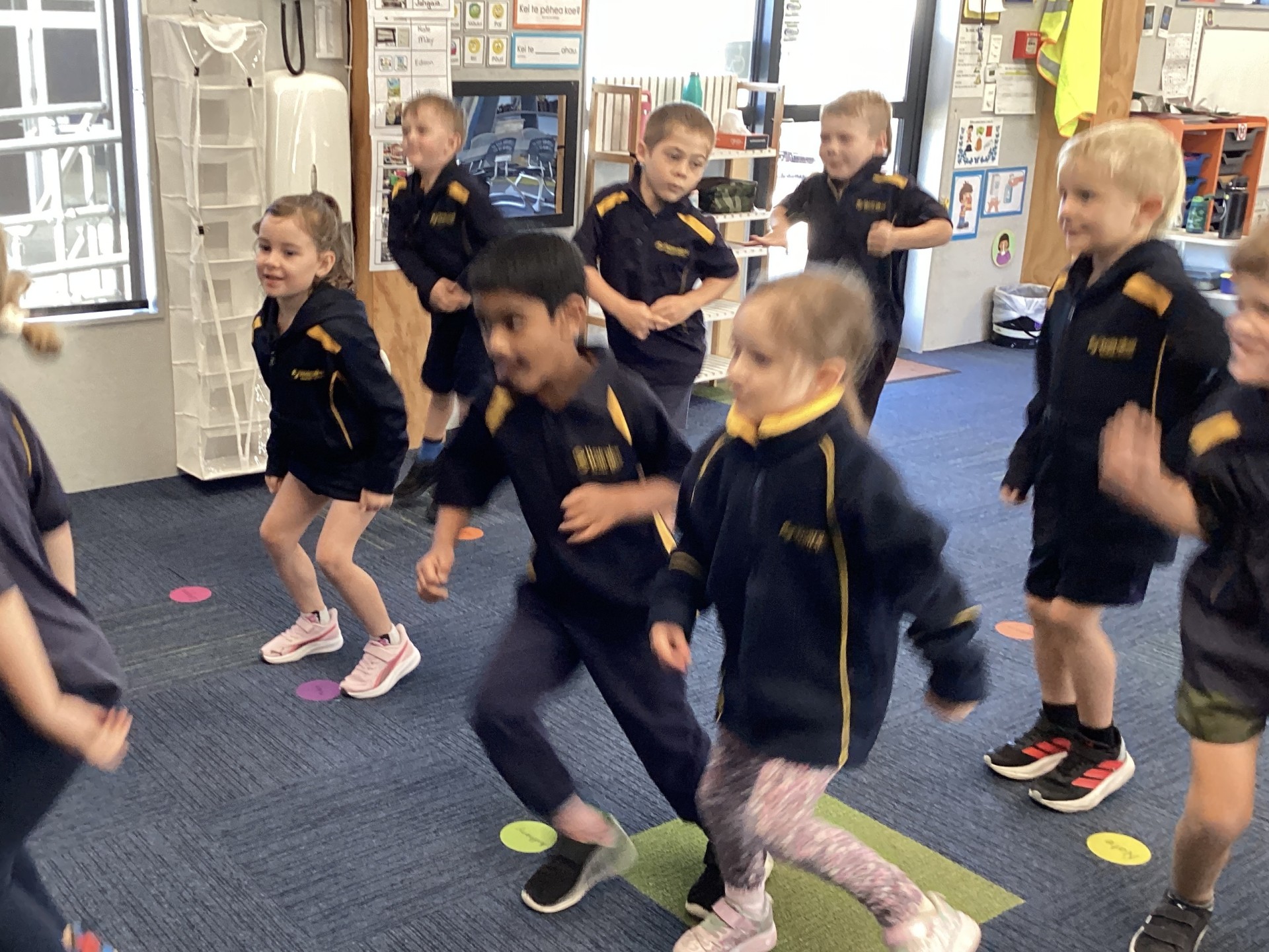Some jumped confidently - just not always in the right way. Others hesitated, looking around in confusion before taking a cautious hop. A few stayed put, eyes wide, waiting for their classmates to show them the way.
Learning left, right, forwards, and backwards is no small task when you have been at school for all of six weeks and you are still learning to read. Without being able to rely on written clues, figuring out which way to move can feel like trying to solve a tricky puzzle. It is one thing to hear the words, and another thing entirely to connect them to movement. The classroom was filled with a mix of determination, laughter, and a whole lot of trial and error.
As the lesson unfolded, patterns began to emerge. Edison, ever the leader, grinned as he confidently moved in the correct direction every time. He even started helping those around him, by showing an “L” with his left hand to check which side was left.
I just look at my fingers and I can see the L that my fingers make on my left hand. If you don't know which way is left or right you will end up nowhere. You won't get to where you want to go
Finn, on the other hand, was less sure. His first few jumps were a mix of right and wrong, his face serious as he tried to work it out. As he watched his classmates and listened carefully, his movements grew more certain.
I got mixed up a lot at first. But then I saw Eddy and started copying him. I worked it out - most of the time. It was tricky but fun
One determined learner, Anthony, jumped with great enthusiasm each time Mrs Berger called out a direction - unfortunately, it was almost always in the wrong way. His face would show confusion when he repeatedly collided with Heidi. However, his enthusiasm never wavered. He watched his classmates and took guidance from Mrs Berger before he made the connection between the word and the movement. When he finally jumped right on command, his face lit up with pride.
If you don't know left or right you wont know your way home or to the supermarket, we might get lost. I would feel sad
Why this learning matters?
Understanding left and right, forwards and backwards is a key skill for everyday life. It helps with:
-
Following instructions (eg, in sports, dancing, or road safety)
-
Spatial awareness (knowing where things are around us)
-
Early maths and literacy (positioning and sequencing)









Comments
No one has commented on this post yet.